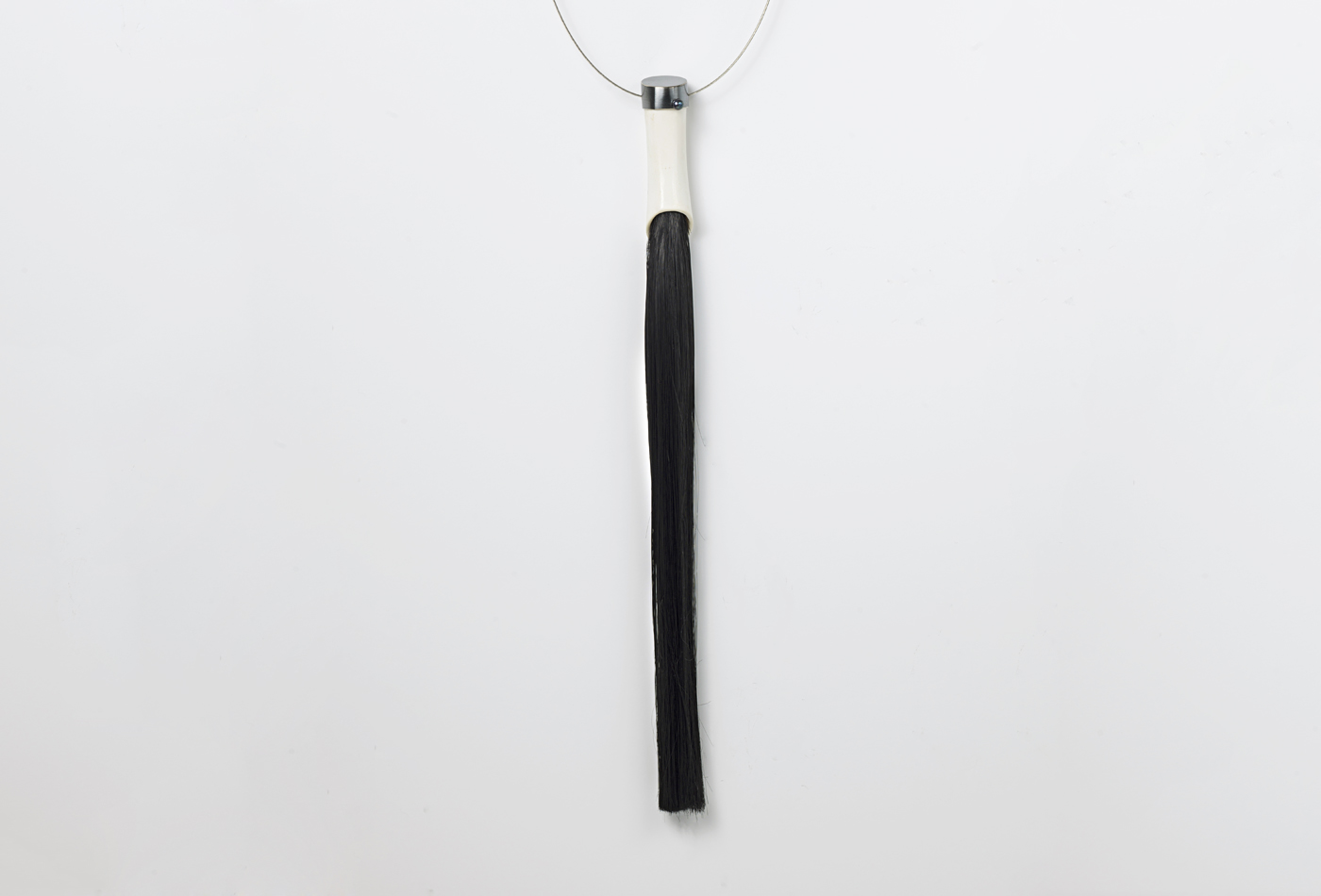






















1 / 20
Elfi Spiewack
Osseous
Good Girl IX
Brooch, 2015
bone, pearls, synthetic hair, silver
$750 | ENQUIRE
2 / 20
Elfi Spiewack
Osseous
Good Girl IV
Brooch, 2015
bone, pearls, silver
$635 | ENQUIRE
3 / 20
Elfi Spiewack
Osseous
Good Grl VI
Brooch, 2015
bone, pearls, synthetic hair, silver
$690 | ENQUIRE
4 / 20
Elfi Spiewack
Osseous
Good Girl III
Brooch, 2015
bone, pearl, synthetic hair, silver
$660 | ENQUIRE
5 / 20
Elfi Spiewack
Osseous
Good Girl V
Brooch, 2015
bone, pearls, synthetic hair, silver
$600 | ENQUIRE
6 / 20
Elfi Spiewack
Osseous
Good Girl X
Brooch, 2015
bone, pearl, synthetic hair, silver
$600 | ENQUIRE
7 / 20
Elfi Spiewack
Osseous
Good Girl
Brooch, 2015
bone, pearls, silver, synthetic hair
$POA | ENQUIRE
8 / 20
Elfi Spiewack
Osseous
Good Girl II
Brooch, 2015
bone, pearls, silver
$637 | ENQUIRE
9 / 20
Elfi Spiewack
Osseous
Good Girl VIII
Brooch, 2015
bone, pearls, silver
$580 | SOLD
10 / 20
Elfi Spiewack
Osseous
Baa
Necklace, 2015
bone, pearls, silver, synthetic hair
$700 | ENQUIRE
11 / 20
Elfi Spiewack
Osseous
Ring, 2015
sterling silver, oxidised
$POA | ENQUIRE
12 / 20
Elfi Spiewack
Osseous
Ring Set
Rings, 2015
bone, stg silver
$560 | ENQUIRE
13 / 20
Elfi Spiewack
Osseous
Ring Set VI
Rings, 2015
9 ct gold, bone
$1120 | ENQUIRE
14 / 20
Elfi Spiewack
Osseous
Ring Set
Rings, 2015
bone, sterling silver
$POA | ENQUIRE
15 / 20
Elfi Spiewack
Osseous
Rings, 2015
stg silver, 9ct gold
$420-950 | ENQUIRE
16 / 20
Elfi Spiewack
Osseous
Ring Set V
Rings, 2015
bone, oxidised stg silver
$585 | ENQUIRE
17 / 20
Elfi Spiewack
Osseous
Necklace, 2015
bone, pearls, silver, synthetic hair
$700 | ENQUIRE
18 / 20
Elfi Spiewack
Osseous
Necklace, 2015
bone, pearls, silver, synthetic hair
$700 | ENQUIRE
19 / 20
Elfi Spiewack
Osseous
Necklace, 2015
bone, pearls, silver, synthetic hair
$700 | ENQUIRE
20 / 20
Elfi Spiewack
Osseous
Necklace, 2015
bone, pearls, silver, synthetic hair
$700 | ENQUIRE
Osseous
Elfi Spiewack
18 Jun – 04 Jul 2015
It is an elegant juxtaposition of aesthetics and cultural favour. Precious pearls, refined and cossetted, lying in or on the contradictory materiality of bone and hair, sanded and polished or combed and curled into items of paradoxical beauty.
Since arriving in New Zealand from Germany in 1999 Spiewack has developed a distinctive practice combining the clean, simple lines of contemporary European jewellery, a legacy of her formal training as a goldsmith and designer, with the raw vitality of natural found objects – pebbles, flower pods, shells, fruit pips, sponges. All placed, like the rarest of gems, in settings of silver and gold.
In 2008 she began working with animal bones, integrating the skeletal outlines of sectioned bone into pendants and brooches, imbuing a studio-based practice with something more primary, more elemental. As seen in the works in this exhibition, such materials now take precedence, asserting their presence as part of the foundational structure of each item.
Rings of sliced bone are polished and burnt to emphasise their natural texture. Pendants of cylindrical bone, unapologetically true to their form, are capped in silver in an even-handed endorsement of physical desirability. Brooches of bone, obliquely cut to expose the extraordinary structural detail of the bone interior, become receptacles for small clusters or circlets of pearls in a provocative conflation of form and meaning, refined beauty and undisguised corporeality. From many of these, lengths of hair (synthetic, says Spiewack, to avoid adverse reactions) fall and curl in languorous impropriety, seductive, vaguely scandalous, suggestive of beauty and health yet remindful too of the dramatic symbolism of cut hair.
Transforming the raw matter of life into pieces of beguiling beauty is onerous work. Bones, bought from a local butcher, are boiled, scraped, bleached, dried, ground, cut and sanded to a finish of white porcelain or yellowish ivory. The resulting forms are simple, enticing yet deeply ambiguous.
While confronting in their materiality, Spiewack’s use of bones and hair belongs to a long history of personal ornamentation. Early peoples used stone tools to shape human, bird and animal bones into beads, jewellery and totemic objects, including some of the earliest known Venus figurines. Throughout the Medieval period, religious relics, including bones, fingernails and the hair of saints, were collected, displayed and venerated. During the Victorian era a fascination with memento mori grew into a royalty-led cult of mourning. Hair of the deceased was woven into wall hangings, tucked into lockets, plaited, embellished with pearls (representative of tears) and set into bracelets, pendants, rings, brooches and earrings to secure the memory of a lost love close to one’s heart. In contemporary art, a renewed interest in the abject has again directed creative endeavour to human and animal body parts, transgressing notions of beauty and impropriety, repulsion and desire.
In “Osseous”, Elfi Spiewack adopts a more subdued, more formalist approach to her medium. Confronting in their elevation of bodily material, these works nevertheless belie their visceral connotations – their “eek” factor – to present a strangely alluring re-alignment of corporeality and exquisite rarity, of biological structure and fine craftsmanship, of the body of the animal and the body of the wearer.
Sally Blundell, 2015
